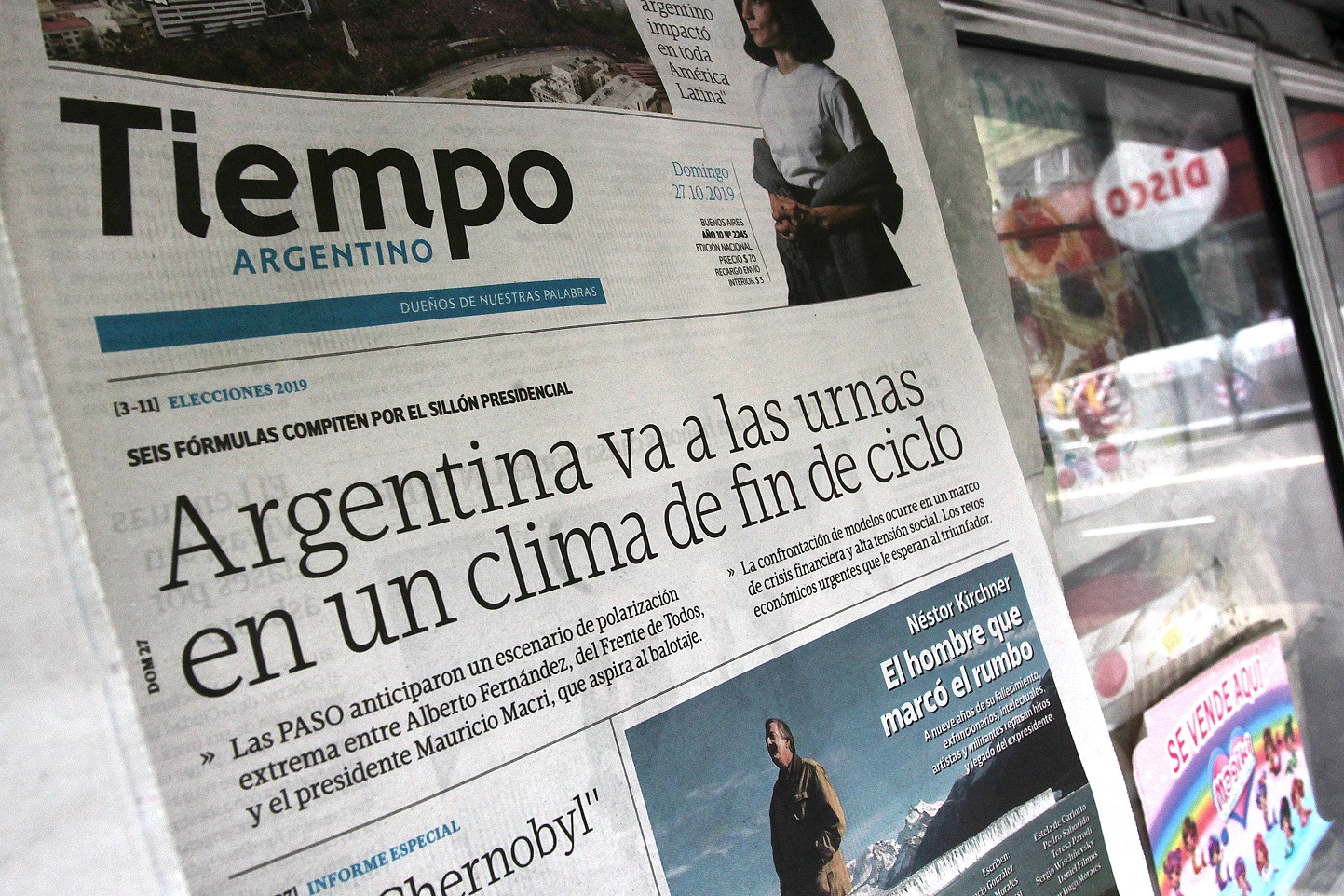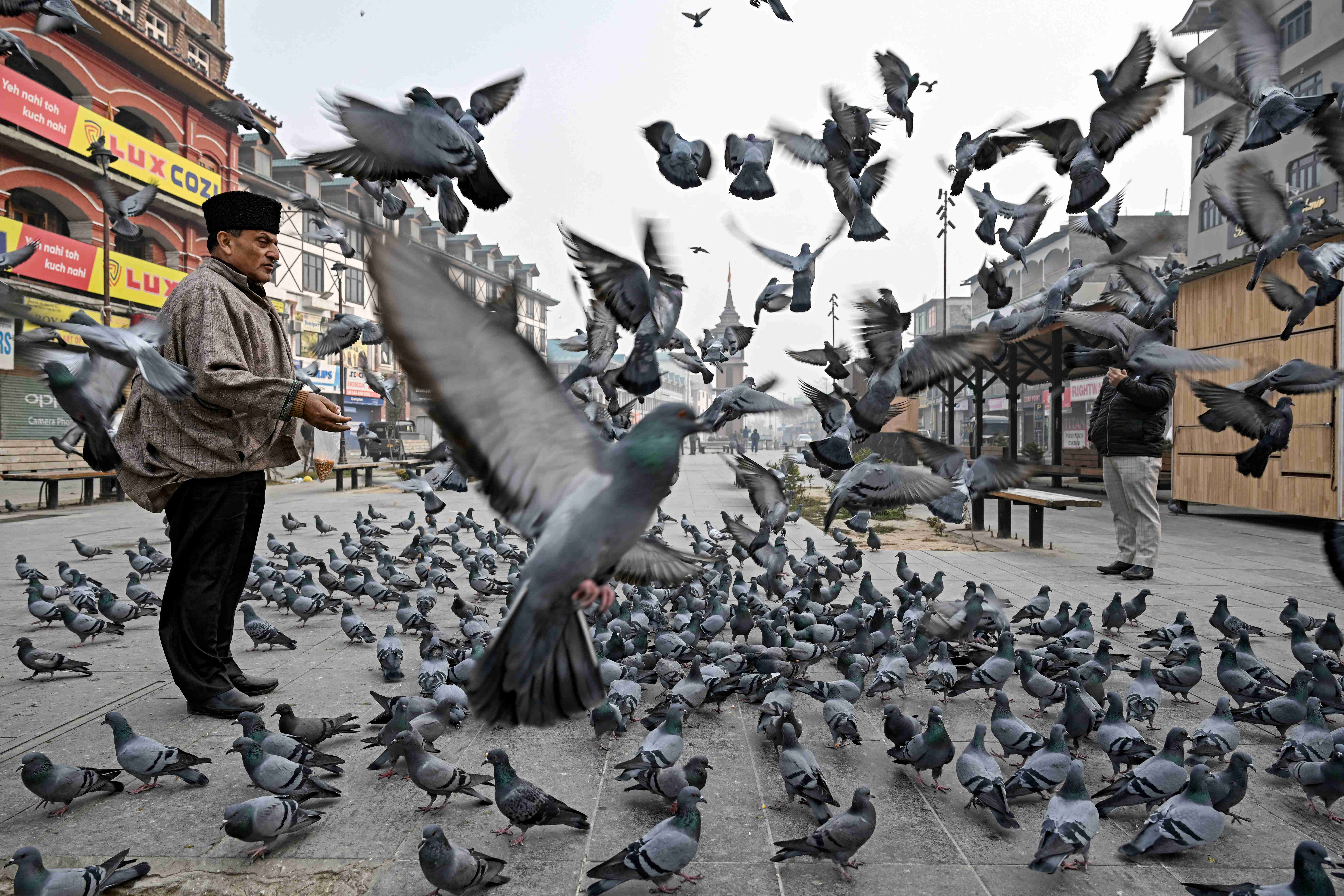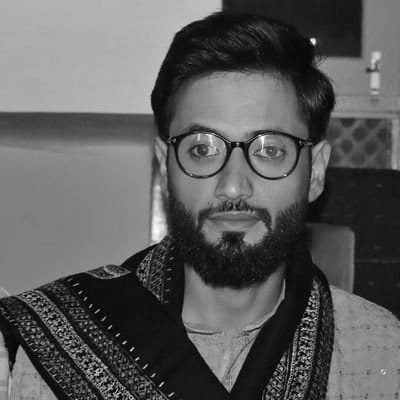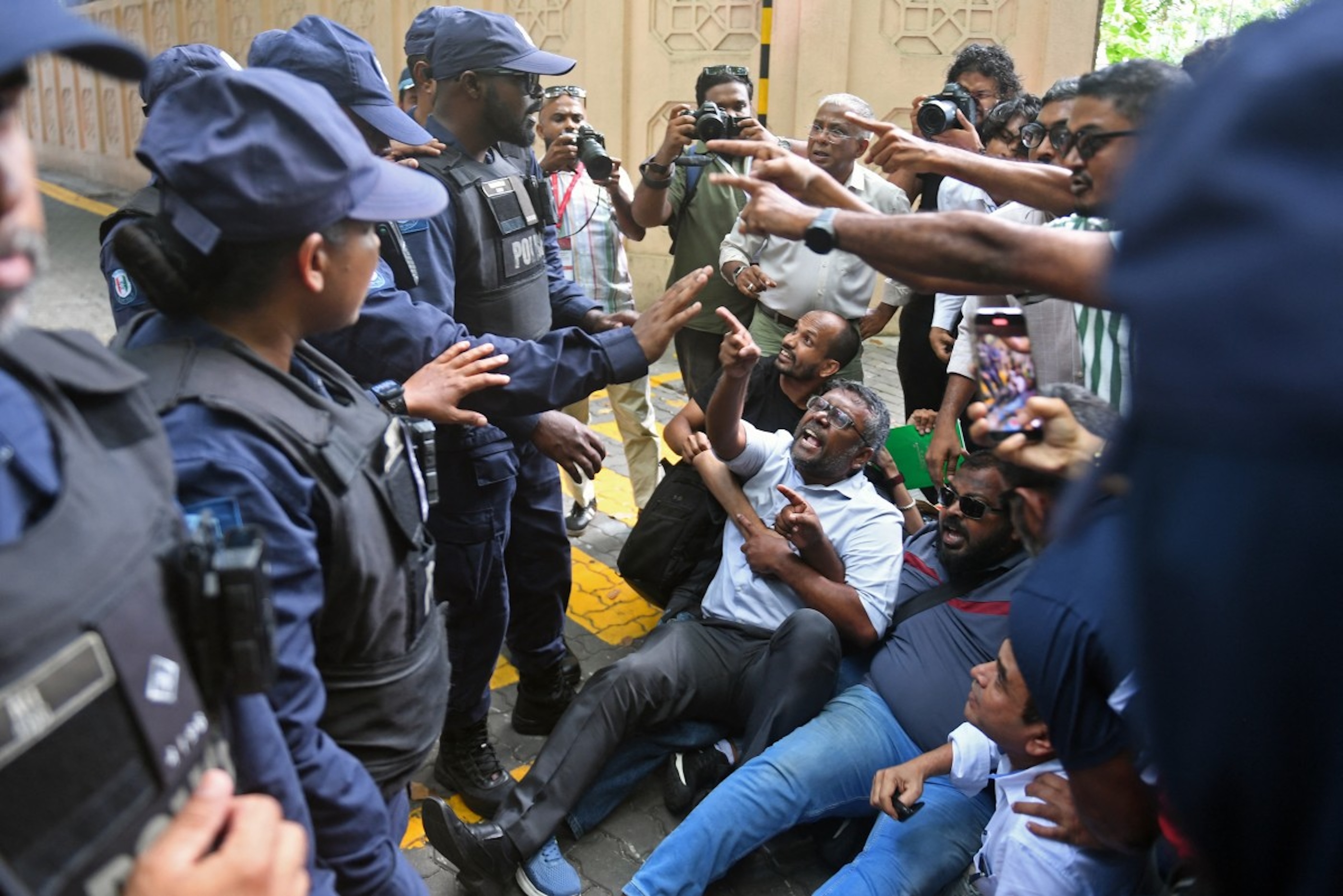عادة ما تشكل الأحداث الكبرى بالنسبة إلى وسائل الإعلام تحديات كبيرة، وفرصا أكبر في الوقت ذاته، ذلك أن تغطية حدث مثل الجائحة أو الحرب تفرض على غرف الأخبار إعادة ضبط جداول العمل وتنظيمه لفترات طويلة، لكنها تتمايز فيما بينها من حيث قربها أو بعدها عن مسرح الأحداث، ومن حيث إمكانية إجراء التغطية الميدانية لتلك الوقائع من عدمها. الصراع الأوكراني الروسي مثلا، احتل مساحة غير معهودة في فضاءات الكثير من وسائل الإعلام، الكبيرة والمتواضعة منها، حتى إن العديد من المؤثرين على موقع يوتيوب (اليوتيوبرز) ومن جنسيات مختلفة أقدموا على المغامرة والذهاب إلى المناطق المجاورة لساحات المعارك.
هذا الوضع سلط الضوء كذلك على الفجوة الكبيرة بين وسائل الإعلام فيما تملكه من موارد. كان الطلب على المعلومات بشأن الحرب -بحسب مسؤولين عن وسائل إعلام مختلفة في الأرجنتين- كبيرا منذ اليوم الأول للغزو، لذا كان من الطبيعي أن تشغل عمليات التحليل ومعالجة البيانات مساحة مناسبة على صفحات الويب ووسائل الإعلام المطبوعة، وساعات عديدة على شاشات التلفزيون وأثير الإذاعات.
قبل أن نواصل المقال، من المهم جدا أن نعرف وبوضوح من أين يستقي الأرجنتينيون الأخبار، فقد تغير الاستهلاك الإعلامي لأكثر من 45 مليون مواطن بتقدم الزمن. في تقرير أعدته صحيفة "إل دياريو" ومنظمة "مراسلون بلا حدود" لوحظ تركّز الوسائط المتعددة في عدد قليل من المؤسسات الإعلامية، كما كشف التقرير عن وسائل الإعلام التي يفضلها الأرجنتينيون أكثر من غيرها.
أوضحت الدراسة أن 95% من الأرجنتينيين يستقون الأنباء من قنوات التلفزيون، وأن 70% منهم تقريبا يستمعون إلى الراديو كذلك، أما فيما يتعلق بوسائل الإعلام المكتوبة فإن 57% منهم يقرؤون الصحف، سواء في نسخها الورقية أو على مواقعها الإلكترونية.
لقد ترتب على الجائحة أن يصير الإنترنت هو النجم الذي يهتدى به إلى المعلومات المتنوعة، سواء من وسائل الإعلام أو من شبكات التواصل الاجتماعي. من كل 100 أرجنتيني هناك 88 يستخدمون الهاتف النقال، و85 من كل 100 منهم يستخدمون الإنترنت، وبحسب معطيات حكومية صادرة عن المؤسسة الوطنية للإحصاءات والتعداد (INDEC) فإن نمو وسائل الإعلام على الإنترنت وازدياد الطلب على المعلومات عبر شبكات التواصل الاجتماعي غدا أمرا جوهريا.
الأرجنتين، أحد بلدان أميركا اللاتينية التي شهدت نموا كبيرا للمؤسسات الإعلامية، سواء في عددها أو في جودتها المهنية. تتعايش في الوسط الإعلامي مؤسسات تقليدية مع مشاريع ناشئة بمنصات وتعاونيات جديدة.
من الضروري كذلك الإشارة إلى أن خط التحرير في كل وسيلة إعلامية كان مشغولا بإبراز الصورة الظاهرية على حساب الحقائق، ففي حين أظهرت أغلب التغطيات في الأرجنتين تقاربا وتعاطفا مع أوكرانيا، كان هناك عدد قليل من المؤسسات التي انحازت إلى الرواية الروسية.
الموارد وصحافة الجودة
لطالما كانت وسائل الإعلام الأرجنتينية تتطور وأنظارها صوب أوروبا، ولذلك فإن التغطيات الصحفية دائما ما تحمل الصبغة الأوروبية ذاتها، نرى الآن كبريات المؤسسات ذات الوسائط المتعددة التي كانت نقطة انطلاقها من الصحف الورقية تشغل تركيزا عاليا في السوق مع تنوع كبير في منصاتها الإعلامية، كما هو الحال في صحف "لاناسيون" و"كليرين" اللتان تشكل كل منهما جزءا من مجموعة إعلامية ضخمة، لها قنواتها وإذاعاتها ومواقعها الخاصة.
وفقا لاستطلاع أجرته "مراسلون بلا حدود" وصحيفة "تييمبو" فإن أكبر أربع مؤسسات إعلامية في الأرجنتين تستحوذ على متابعة نصف الجمهور الوطني من بين كل وسائل الإعلام، كما أن 25% من كل هذه الجماهير هي بين يدي مجموعة كليرين.
هناك أشكال عديدة للتغطيات الإعلامية، وهي في مجملها رهينة بشكل أساسي بالإمكانات الاقتصادية للمؤسسات وبإمكانات موظفيها كذلك.
تعتمد عمليات النشر في وسائل الإعلام الكبرى مثل "لاناسيون" و"كليرين" على فريقين إعلاميين أو أكثر في أوكرانيا. يُعد الصحفيون تقارير إخبارية لكل المنصات التابعة للمؤسسة وينقلون الكثير من الأحداث عبر حساباتهم الشخصية على شبكات التواصل. ما يميز هذه التغطيات أنها تشتمل على رؤى وتجارب شخصية من موقع الأحداث، ما يقدم تجربة إعلامية مكتملة تخدم الرأي العام، وكذلك فإن هذه المؤسسات هي من القلائل التي تمتلك ميزانية كافية لتوظيف مراسلين في الخارج. إن مثل هذه المؤسسات تمثل سلالة مهددة بالانقراض من بين وسائل الإعلام في العالم أجمع.
لتغطية الأحداث العاجلة تستعين هذه المؤسسات بوكالات الأنباء العالمية، كما تنقل آخر التطورات وتعطي تفسيرا للمجريات، وروايات وقصصا مختلفة عبر الحسابات الشخصية للمراسلين والمبعوثين، أما التحليلات الإخبارية فتكون بأيدي متخصصين في غرف التحرير وخبراء دوليين.
تعرض كليرين كل هذه المواد الإخبارية بشكل يومي على الصفحات الأولى من إصداراتها الورقية والرقمية، بينما تعرضها بمواقيت مركزية على بقية منصاتها الإعلامية.
الصحفية كارولينا أموروسو، هي واحدة من الصحفيين الشباب في كليرين، وتتمتع بخبرة كبيرة في مجال الصراعات الدولية. حظيت أعمالها بإعجاب واسع لدى الجمهور ولدى زملائها أيضا. استحوذت على المتابعين من خلال رواياتها الواضحة والمستدامة بقدر معرفتها في السياسة، بحساسية عالية في تقاريرها ومن دون الوقوع في سقطات مهنية، سافرت الصحفية أياما قليلة إلى ساحة الصراع في بدايته، وظلت هناك إلى أن شغل مكانها زميلها من قناة تي إن نيلسون كاسترو، وهو أحد النجوم المخضرمين في مجال الإعلام.
التحدي الأكبر كان في "لاناسيون"، التي كانت أول مجموعة تجري التغطية عبر واحدة من المتخصصين في مجال الحروب، إليزابيتا بيكيه، المراسلة التي وصلت إلى قلب الصراع بعيد اشتعاله، وهي تقيم في إيطاليا أساسا، كانت أول أرجنتينية تنقل الأحداث من الجبهة، تميزت بأسلوبها المباشر والأصيل، رواياتها آسرة ومدهشة، تتمتع بخبرة واسعة في المجال، وكانت قد ألفت كتاب (يوميات حرب.. أفغانستان - العراق).
ما تبقى من وسائل الإعلام -وبإمكانات قليلة- تجهد في التركيز على الأنباء العاجلة وعلى شبكات التواصل، تضفي طابع التحليلات المحلية على أنبائها، وتبذل جهودا تستحق الثناء، ذلك أنها رغم تعدد الصعوبات كان الإبداع لديها واضحا للغاية. ذلك أن الكثير من هذه المؤسسات عمدت إلى تغطية الحرب بلون محلي، عبر نقل أصوات المهاجرين والمواطنين المنحدرين من أصول روسية وأوكرانية، ومعظم المقالات التي نشرت في هذه المرحلة تبدي الاهتمام الكبير الذي أيقظه الصراع في بلد تكوّن شعبه سابقا من أبناء وأحفاد المهاجرين الأوروبيين.
الغريب أن هناك عددا من وسائل الإعلام من خارج بوينوس آيرس اختارت أن تبعث مراسليها إلى الحرب، مثل صحيفتي لافوز ديل أنتيريور من مدينة كوردوبا و"إيل ليتورال" من سانتافييه رغم أنهما مرتبطتان بـكليرين.
نظرة من الخندق الصحفي
مقابلة مع ألبيرتو لوبيز جيروندو، نائب رئيس التحرير في قسم الأخبار الدولية بصحيفة "تييمبو أرجنتينو" التعاونية. هذه المؤسسة التي يديرها ويدعمها العاملون فيها، تقدم تغطية شاملة للصراع من دون أن ترسل مراسلا أو مبعوثا إلى ساحة الصراع. الملاحظات التفسيرية ووجهات النظر التحليلية التي تعرضها تكمل الصورة التي بدأت رسمَها المقالات التي تصف المشهد.
كيف ترى تغطية وسائل الإعلام الأرجنتينية للحرب؟
بشكل عام أراها منحازة لصالح المواقف الغربية المنتشرة على وسائل الإعلام المهيمنة على المشهد. أرى تغطيات إعلامية توظف الجانب العاطفي وصولا إلى النتائج التراجيدية للحروب، بينما تغض الطرف عن الخلفيات الجيوسياسية والاقتصادية الكامنة وراء الأحداث.
ما التحديات التي تفرضها تغطية صراع من دون مبعوث خاص أو مراسل؟
التحدي في أي صراع يكمن في إدراك أي من المعلومات المتوفرة هي المعلومة الصحيحة، وفي فهم كيفية إدارة عملياتنا "الاستخبارية" كصحفيين بشأن الأحداث، دائما ما تتحول المعلومة إلى سلاح، خاصة في ظروف كهذه.
ما توصياتك لطلاب الصحافة الذين أوكلت إليهم مهام التغطية عن بعد للأحداث الأخيرة؟
أنصحهم بالاطلاع والاستفادة من شبكات التواصل الاجتماعي والوسائط البديلة للحصول على مقاربات أفضل لحقيقة الأحداث الدائرة، لأن وجودنا في ساحة المعركة لا يضمن لنا دائما الحصول على بيانات أو معلومات مفيدة.
كيف يتم إعداد الأجندة اليومية للتغطية؟ ما هي الأولويات؟
بالنسبة إليّ، فإن ما يجب إعطاؤه الأولوية هو إعداد بانوراما كاملة ومخطط واضح للعمل الذي ننوي إنجازه، أن نطرح أسئلة شاملة تكتمل بها الصورة؛ ما الذي يدور في ساحة المعركة، وما الذي يجري هناك على طاولة المفاوضات. بالنسبة إلى كثير من وسائل الإعلام، تلك التي يهمها أن "تبيع" شيئا كل يوم، فإنها تركز على قصص وروايات شخصيات معينة، تنقل الدراما اليومية التي يمرون بها، والحقيقة أن تلك الروايات منزوعة السياق لا تضيف شيئا ذا قيمة.
هل تتطلب تغطية القضايا الدولية الاستعانة بمتخصصين في تلك الموضوعات؟ أم تكليف مجموعة من الموظفين بتولي هذه المهمة دون غيرها من المهام؟
من الأفضل دائما الاستعانة بأشخاص ذوي خبرة في كل موضوع من الموضوعات الجارية، متخصصين في القضايا الأمنية أو الاقتصادية أو السياسية، أو الدولية كما هو الحال في الحرب الراهنة، فمن دون توفر قاعدة من المعارف التاريخية والجيوسياسية إضافة إلى الأحداث الجارية لا يمكنك أن تمنح أي معلومة جديدة الأهمية التي تكتسيها.
من وجهة نظرك، كيف بالإمكان تأهيل صحفي مبتدئ في مجال القضايا الدولية؟
ينبغي له أن يراكم معارف في التاريخ بشكل عام وفي السياسة، مع قاعدة لا بأس بها في الاقتصاد والعلوم الاجتماعية، تظل أمامه الممارسة العملية يوما بعد يوم، وبالطبع، ذاكرة تحفظ كل ما يجري من وقائع في الوقت الراهن.









































